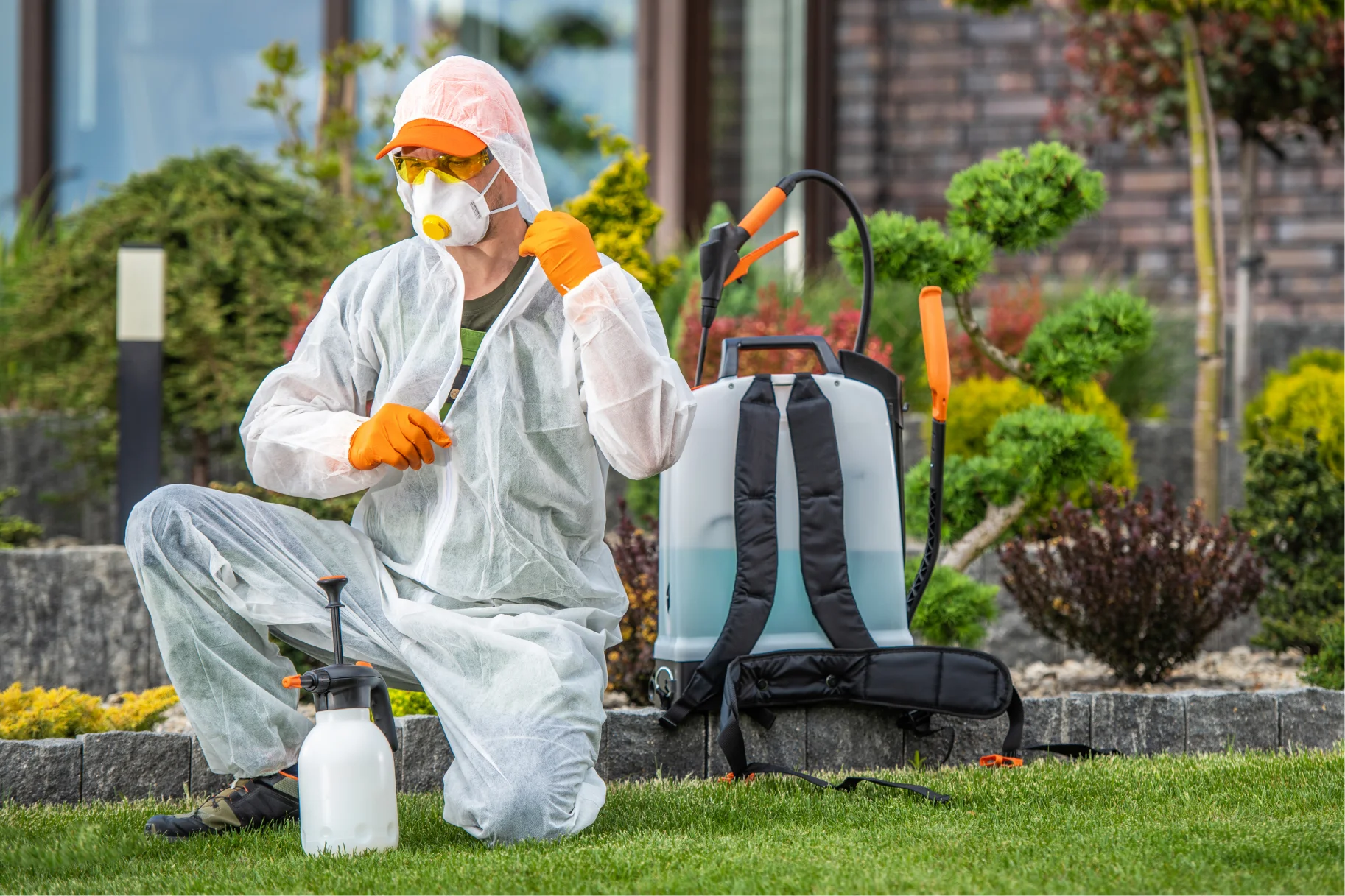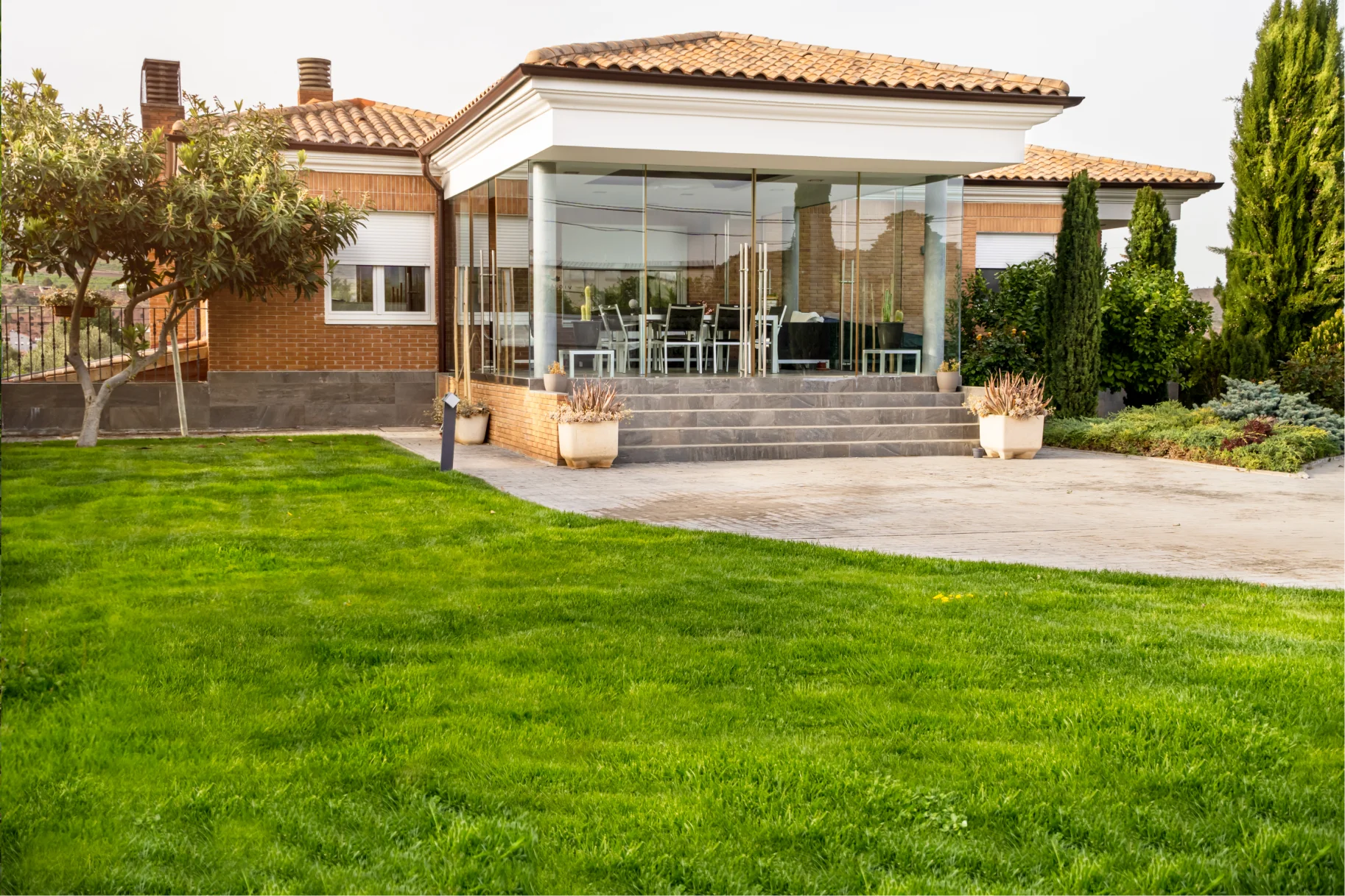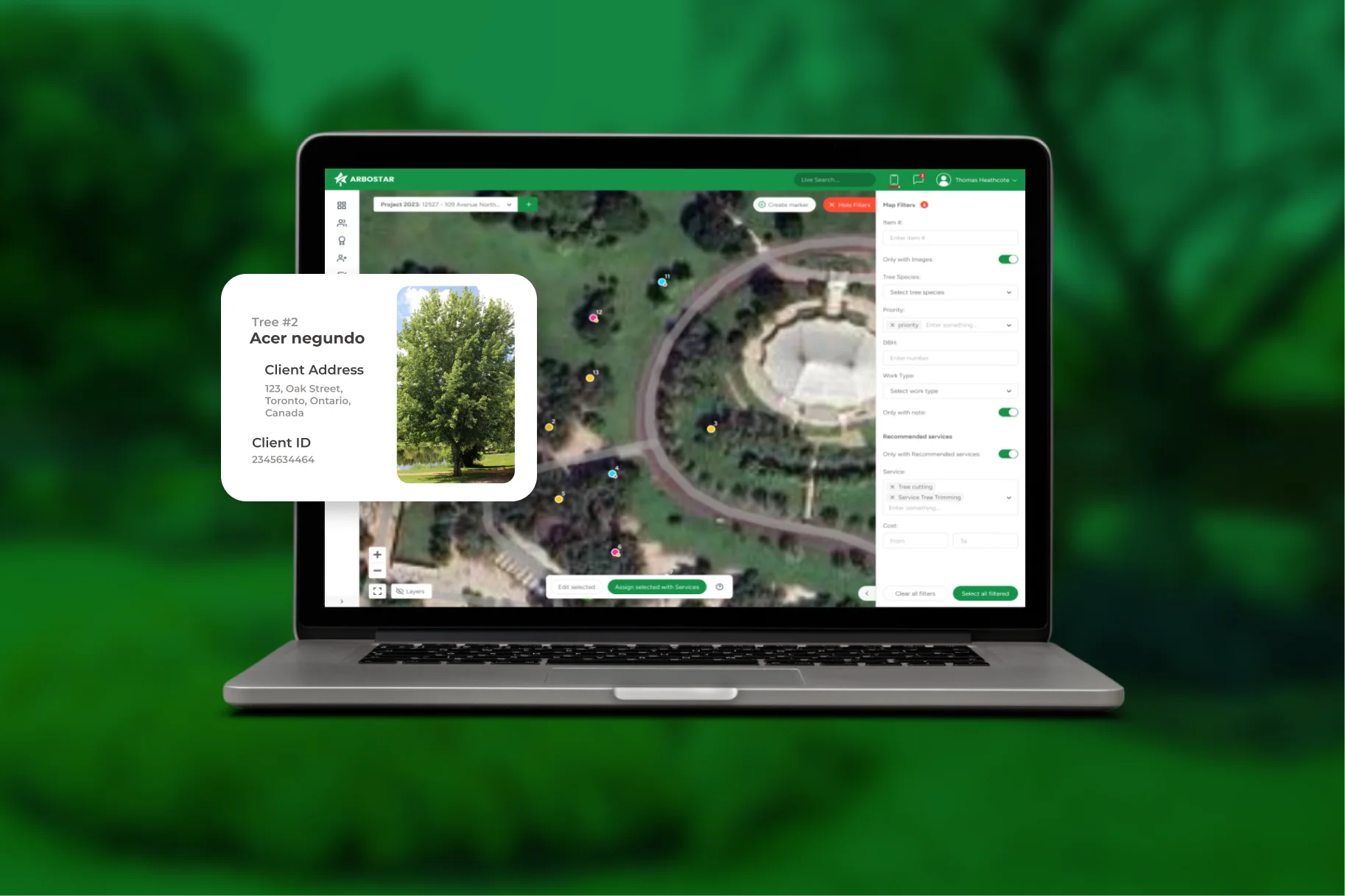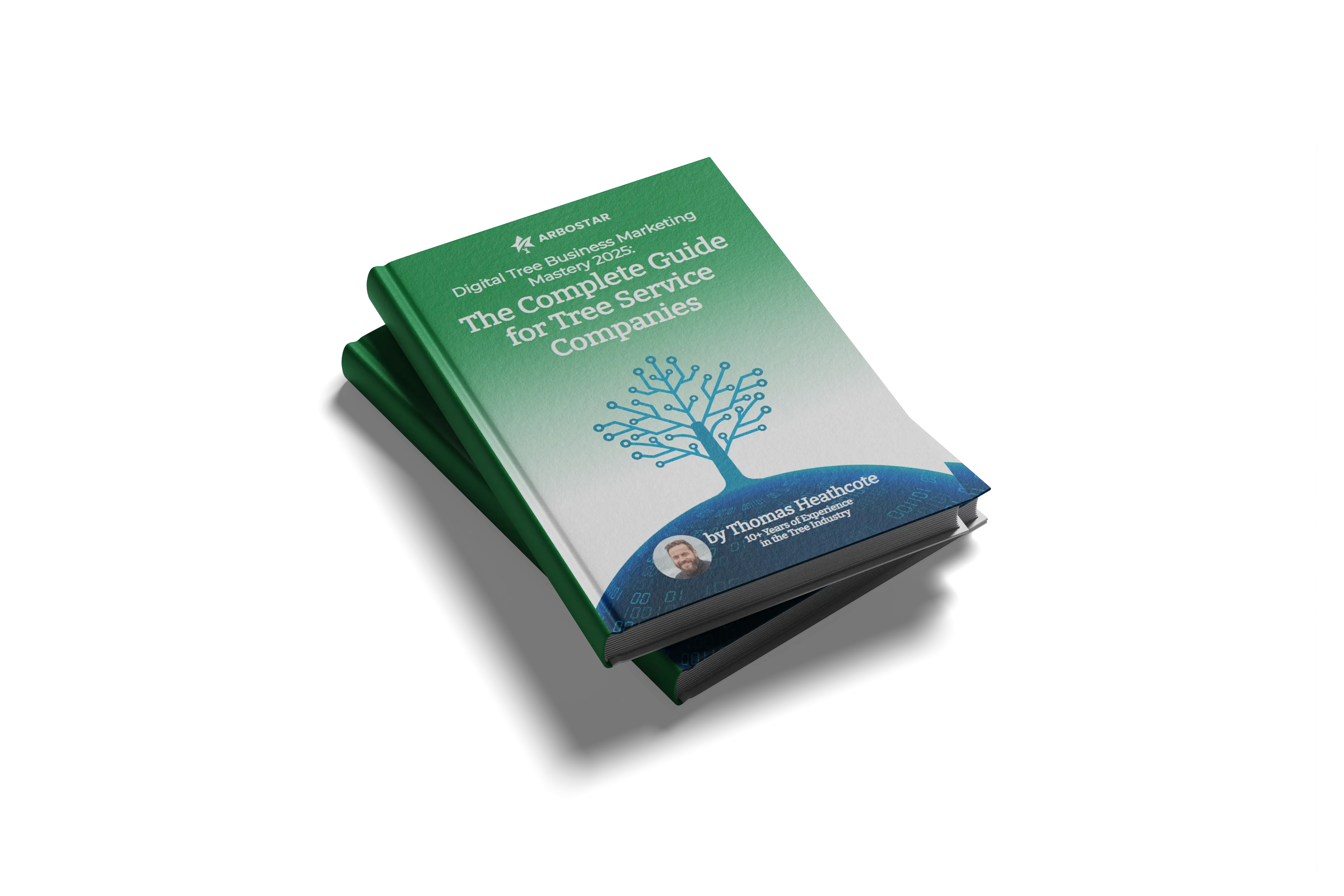What is a Plant Health Care Program?

Here’s a key insight – strong, healthy plants handle stress and pests far better than reactive treatments. At the heart of Plant Health Care (PHC) is a simple principle – nurture, don’t just fix.
Strong, healthy landscapes don’t happen by chance. PHC combines three pillars of plant healthcare – regular monitoring, early detection, and proper care. The core task is to protect trees from pests, diseases, and environmental stress.
PCH is based on the Integrated Pest Management (IPM) principles and combines careful planning, monitoring, and targeted treatments. Over time, it saves money, supports the environment. So, tools like ArboStar make it easy to plan, track, and manage every part of a PHC program.

The Concept of Plant Health Care
The main idea of Plant Health Care (PHC) is to keep plants healthy, strong, and looking their best. It focuses on prevention, not reacting to pests, and cares for the whole plant and its environment.
Definition of PHC
What lies in the base of healthy plants, is the right care. You have to apply PHC to reduce the risk of different types of stress. If you monitor them regularly, you can detect issues earlier, and – as a result – ensure proper watering, fertilization, soil quality, pruning, and selecting species suited to the site.
Origins in Integrated Pest Management (IPM)
Plant Health Care is based on the principles of Integrated Pest Management (IPM) – as an eco-friendly alternative to broad-spectrum pesticides usage.
-
IPM Focus – IPM is a smart way to manage pests using a mix of methods – natural, cultural, physical, and chemical.
-
PHC Evolution – PHC goes beyond IPM by caring for the whole plant. It tackles the causes of stress (for example, weak soil, improper planting, low water, etc.), helping plants resist disease.
Core Principle: Prevention Instead of Reactive Treatment
The main difference with PHC is its focus on prevention rather than reacting to problems:
| Aspect | Plant Health Care (PHC) | Traditional Plant Care |
|---|---|---|
| Philosophy | Proactive and holistic; focuses on creating conditions for sustained health | Reactive and symptomatic; centers on treating problems as they appear |
| Action | Regular monitoring, improving soil, appropriate species selection, proper pruning, and stress reduction | Applying chemicals (pesticides, fungicides) after a significant infestation or symptom is observed |
| Goal | Maintain plant immunity and vigor to prevent problems from escalating | Eliminate or suppress existing pest/disease populations |

Core Elements of a PHC Program
A successful Plant Health Care (PHC) program relies on a set of connected practices to keep plants healthy and strong over time. It follows a clear process: observe, act, and evaluate continuously.
Monitoring and Early Diagnosis
This is the foundation of PHC. What does it include? First and foremost, it is a regular plant inspection. What for? Primarily, for catching problems early and finding quick and effective treatment with minimal effort. We need to check leaves, branches, trunks, and soil to find signs of discoloration, wilting, or pests.
Soil and Root Care
Because most plant problems start underground, caring for the roots and soil is essential. Healthy soil supports strong roots, so plants can defend themselves naturally. What matters to choose the right fertilization way, is soil testing checks pH and nutrient levels. Aeration loosens compacted soil, improving the flow of air, water, and nutrients.
Pest and Disease Management
It applies the principles of Integrated Pest Management (IPM) as part of overall plant healthcare. Cultural, biological, and physical methods – like proper watering, sanitation, and using natural predators – are prioritized. Chemicals are used only as a last resort.
Preventive Maintenance
The key to strong, healthy plants is careful, proactive care. With PHC, you can reduce stress and avoid structural damage. Pruning removes dead or diseased wood, improves airflow, and preserves the plant’s natural shape. Supports like cabling or bracing strengthen weak limbs and help them survive storms. Additional steps – mulching, trunk wrapping, or protective barriers – shield plants from extreme weather and physical harm.
Documentation and Follow-Up
PHC is an ongoing, adaptive process that relies on careful record-keeping and evaluation to ensure long-term success. Detailed records track inspections, treatments, and results for each plant. Regular monitoring helps identify patterns, assess treatment effectiveness, and plan maintenance. This history also guides new plant selections and shapes long-term care strategies.
Benefits of a PHC Program
A Plant Health Care (PHC) program offers many benefits beyond pest control – saving money, protecting the environment, and keeping landscapes healthy and beautiful.
Cost Savings Through Early Detection
PHC focuses on prevention and saving money over time. Catching problems early allows for small, local treatments instead of costly chemicals or tree replacements. Keeping plants healthy also reduces losses and avoids replacing expensive trees and shrubs.
Extended Lifespan of Trees and Plants
Strong plants grow from a well-cared-for environment. With PHC, you can improve soil and root health, supporting long-lasting vitality. Addressing nutrient and soil issues helps plants grow robust and flourish. Managing water, soil, and mechanical stress prevents chronic problems, keeping mature plants healthy for many years.
Greater Resilience to Climate and Environmental Stressors
Plants thrive when their roots dig deep into healthy, well-aerated soil rich in nutrients. Strong roots help them absorb water efficiently and survive periods of drought or extreme heat. When plants are robust, their natural defenses – like thick leaves, resilient bark, and chemical deterrents – work more effectively to fend off pests, fungal infections, and other diseases without constant intervention.
Improved Aesthetics and Property Value
Landscapes shine when plants are well cared for. Healthy, well-shaped, pest-free plants create a lush, inviting environment, while mature, thriving trees and shrubs boost property value and curb appeal.

Why PHC Matters for Arborists and Municipalities
Plant Health Care (PHC) guides each commercial arborist and plant health care technician to act proactively. It shifts their approach from fixing problems to managing plants strategically and sustainably, enhancing client trust and public safety.
Builds Trust with Clients and Communities
Arborists and city officials gain respect and stronger ties through PHC. By overseeing tree health proactively, arborists showcase their skill and earn client trust. For municipalities, keeping trees healthy and safe signals care for the community, fostering public support and confidence.
Reduces Risks and Emergency Interventions
Public safety and smooth operations rise when PHC targets tree structure. Frequent inspections, pruning, and support systems reveal issues early, lowering storm damage risks. Preventive care cuts emergency costs, keeping budgets steady and work more manageable.
Supports Sustainable and Healthier Urban Forests
Urban forestry rests on PHC when cities tend to have large tree populations. Nourished soil, balanced watering, and careful stress control let trees endure, delivering lasting environmental benefits. Limiting chemicals and safeguarding pollinators preserves biodiversity, shaping a genuinely sustainable urban forest.

How Arbostar Supports PHC Programs
Software like ArboStar helps turn Plant Health Care from an idea into an efficient, profitable operation. By digitizing key processes, it enables arborists to provide proactive, data-driven care at scale.
Centralized Client and Plant Data Management
Effective PHC rests on thorough plant records. ArboStar unites all client and plant information in a single, easy-to-access database, removing the need for scattered spreadsheets and paper files. Trees and shrubs are mapped with details like species, size, age, and condition. Observations and photos create a time-stamped history, while treatments, pruning, and soil tests are tracked to support compliance and inform future care.
Scheduling and Tracking Site Visits
PHC works best with regular, timely monitoring and ongoing care. ArboStar makes managing schedules for hundreds of client properties simple. It lets you set up regular visits so no tasks are missed, plan efficient routes using GPS for faster crew operations, and gives field plant health care technicians mobile access to view schedules, track time, and update plant records in real time.
Automated Reports and Analytics to Support Proactive Plant Care
Field data gains purpose through ArboStar, guiding businesses to act ahead and show tangible value to clients. The system signals upcoming service renewals to keep revenue steady, produces tailored reports on treatments, health trends, and chemical use, and enables precise outreach so companies can offer custom services and curb pest or disease outbreaks.
FAQ: Plant Health Care Programs
What does a PHC program include?
Strong plants grow from careful attention. A PHC program monitors soil and tissue, checks for pests and diseases, applies fertilization and pruning, and treats problems early. The focus is on prevention, keeping trees and plants healthy before issues become visible.
How often should plants be monitored in a PHC program?
Plants stay healthier when you keep a close eye on them. Most need a check at least once per season – spring, summer, and fall. In high-risk or valuable areas, monthly visits help catch stress, pests, or nutrient problems early.
Is PHC designed only for trees or for all landscape plants?
PHC covers all landscape plants, not just trees. It includes shrubs, ornamental plants, and even turf areas. Each plant type has its own needs, and PHC programs adapt to maintain balance across the entire landscape.
How does PHC help reduce long-term costs?
By detecting issues early, PHC prevents costly treatments, removals, and replacements. Healthy plants need fewer chemical applications, resist pests better, and live longer – which means lower maintenance costs and higher property value over time.
Final Thoughts
Plant Health Care (PHC) is more than a set of services – it’s a strategic shift in managing and valuing green spaces. It moves focus from costly, reactive treatments to proactive, preventative care that prioritizes ecological health.
With tools like ArboStar, arborists and municipalities can implement PHC efficiently. Platforms like this help centralize plant health data, optimize recurring visits, and produce reports that show the value of preventative plant healthcare.
Adopting PHC with the right technology combines sustainability, prevention, and profitability – ensuring healthier, safer, and more valuable landscapes for the future.




